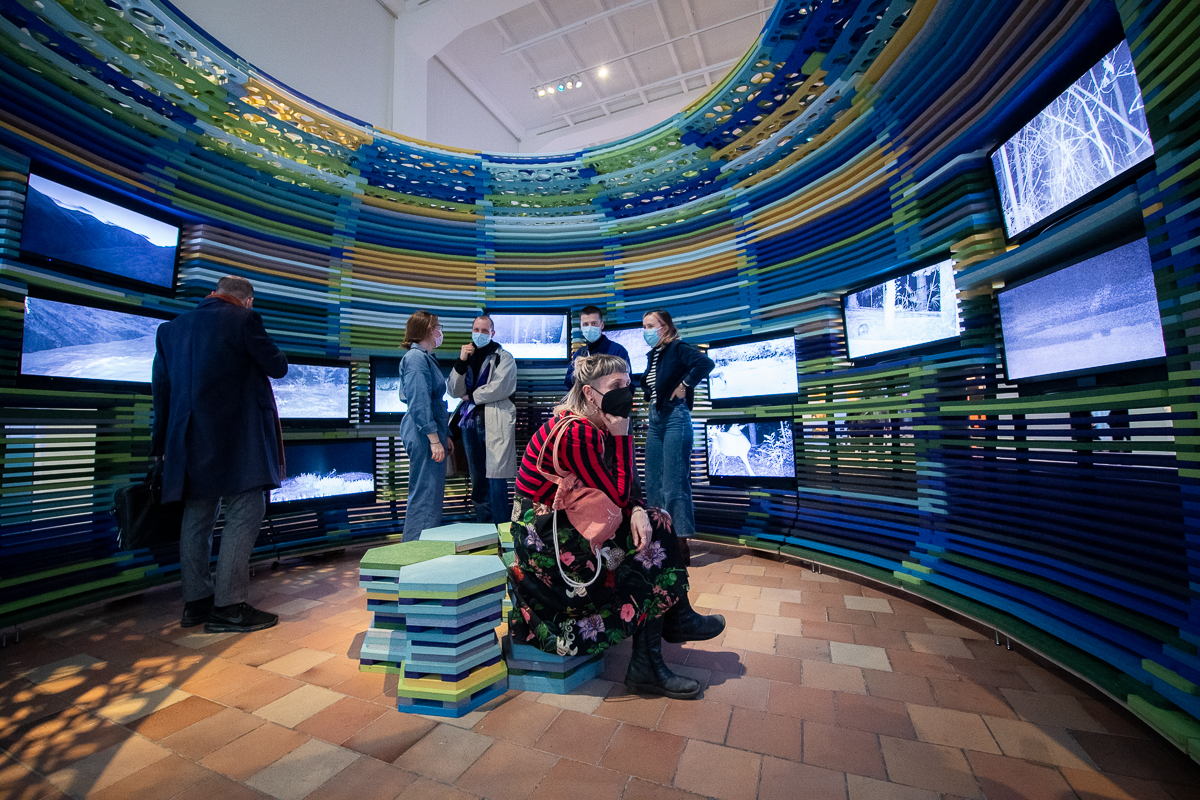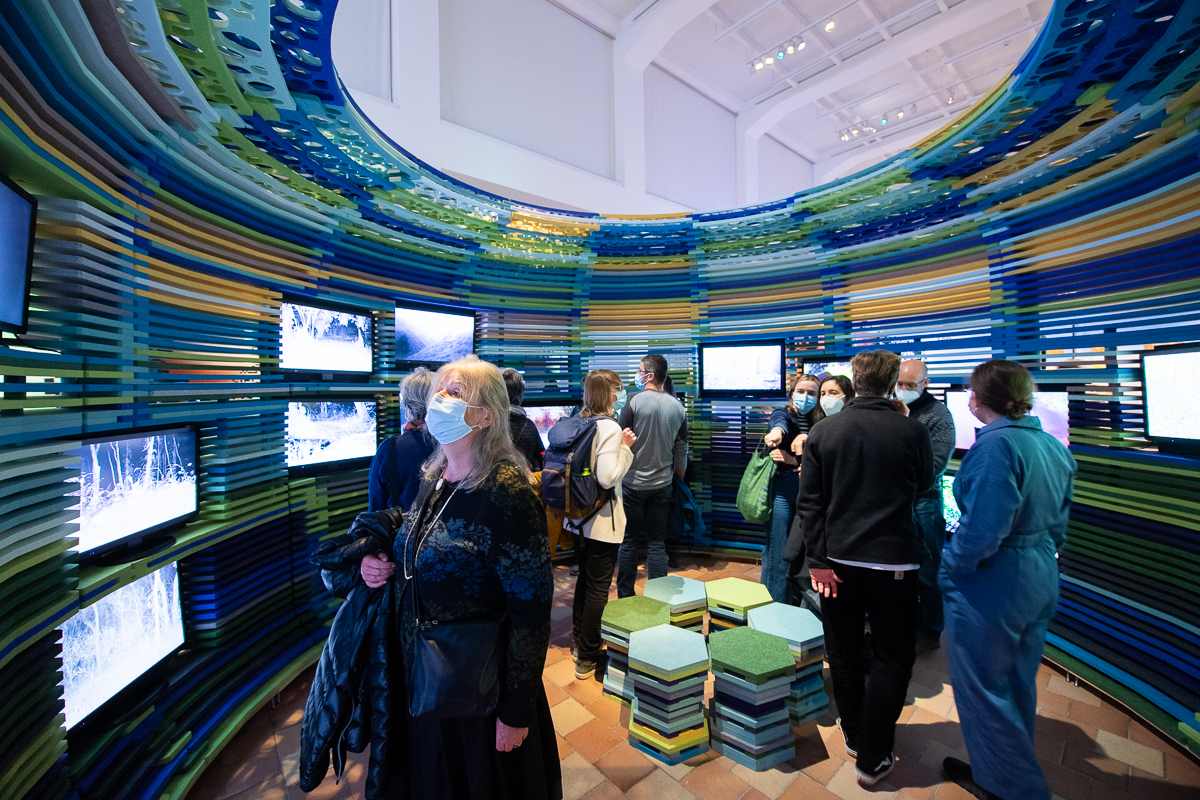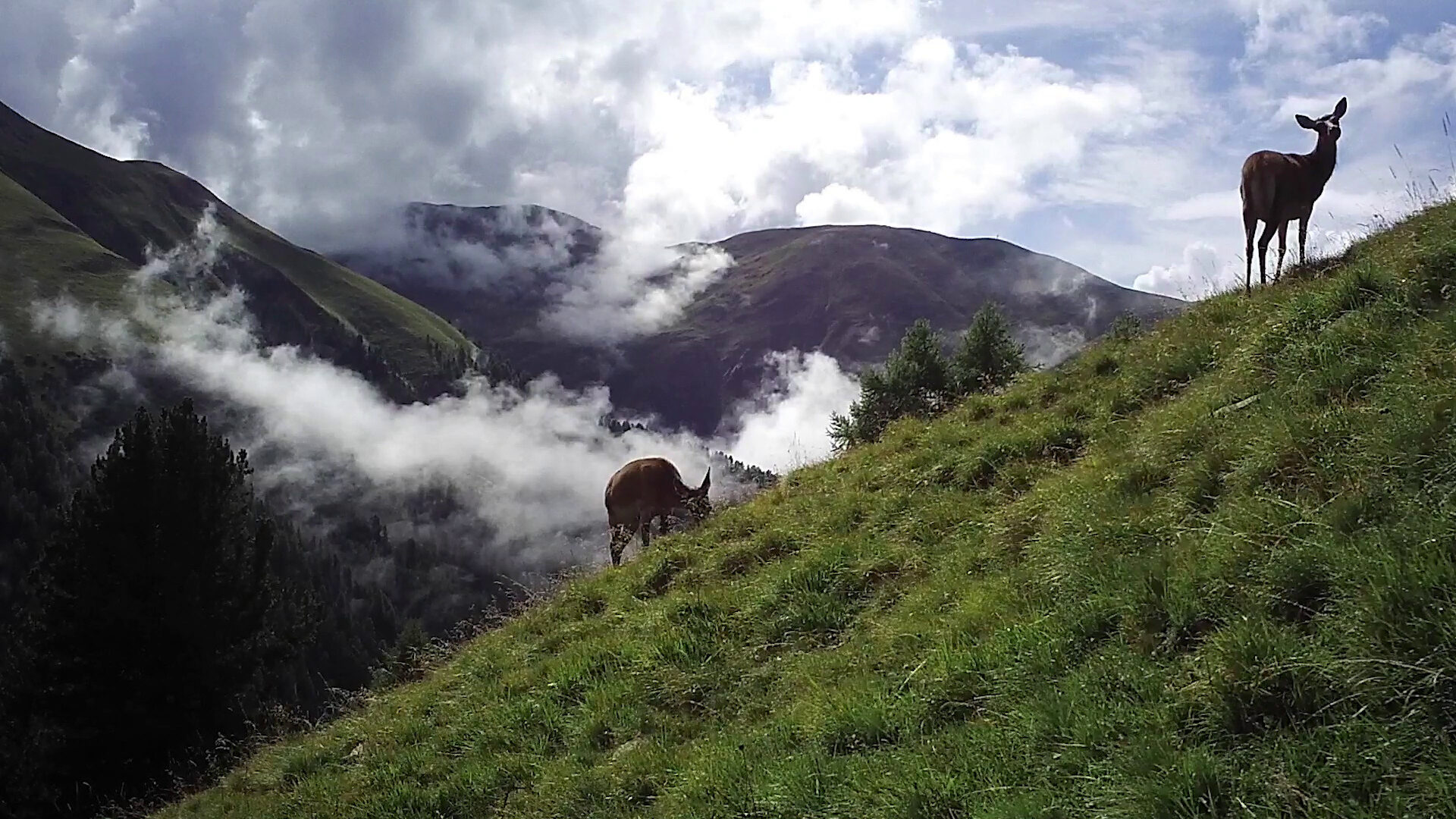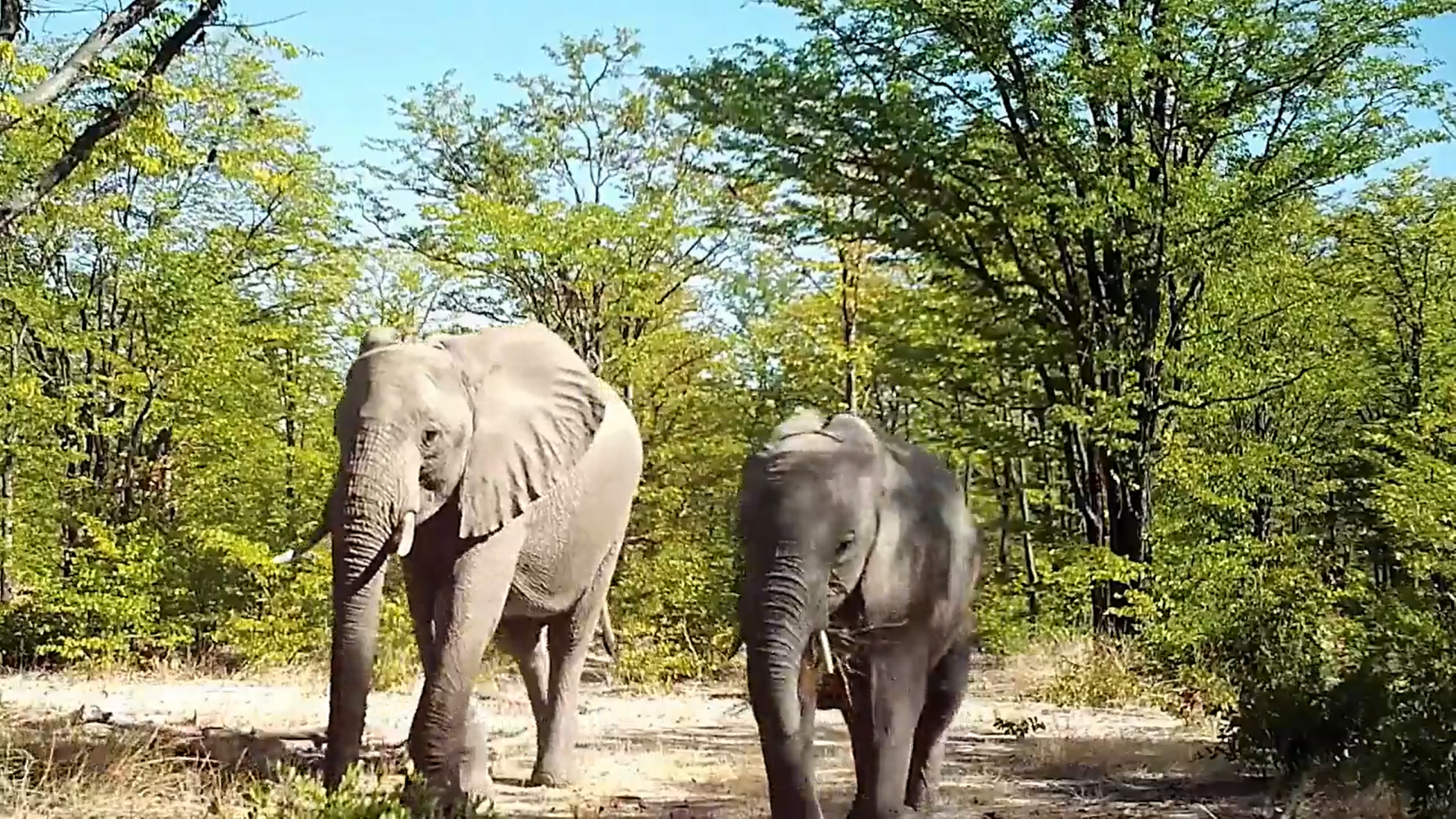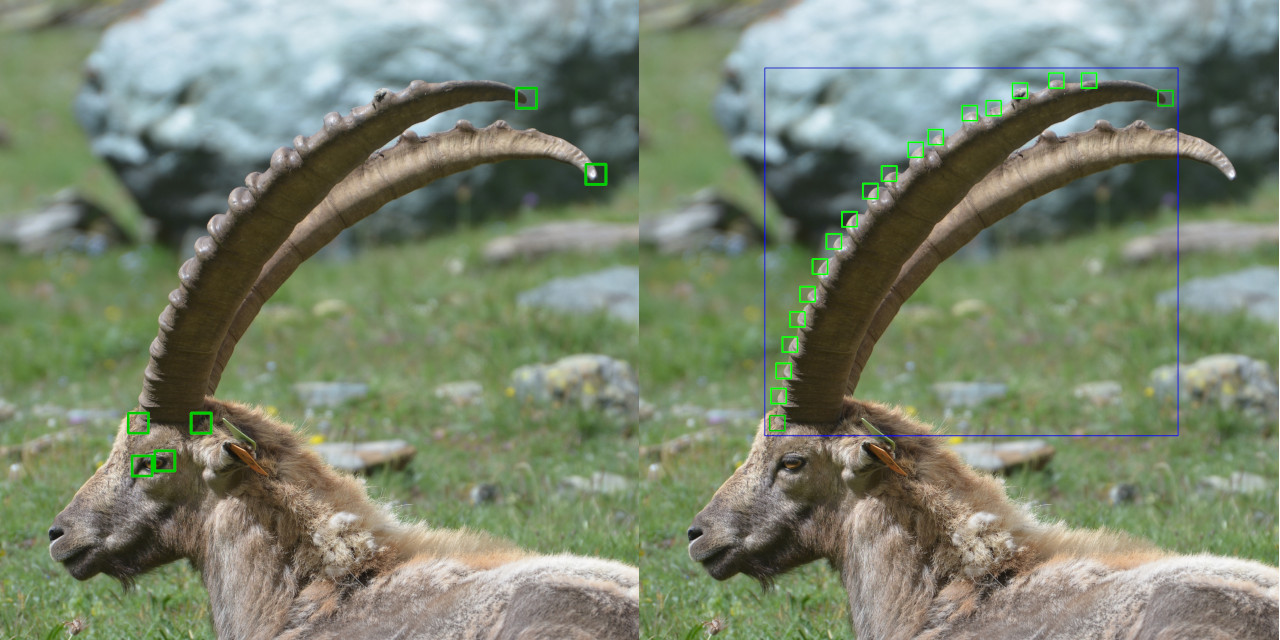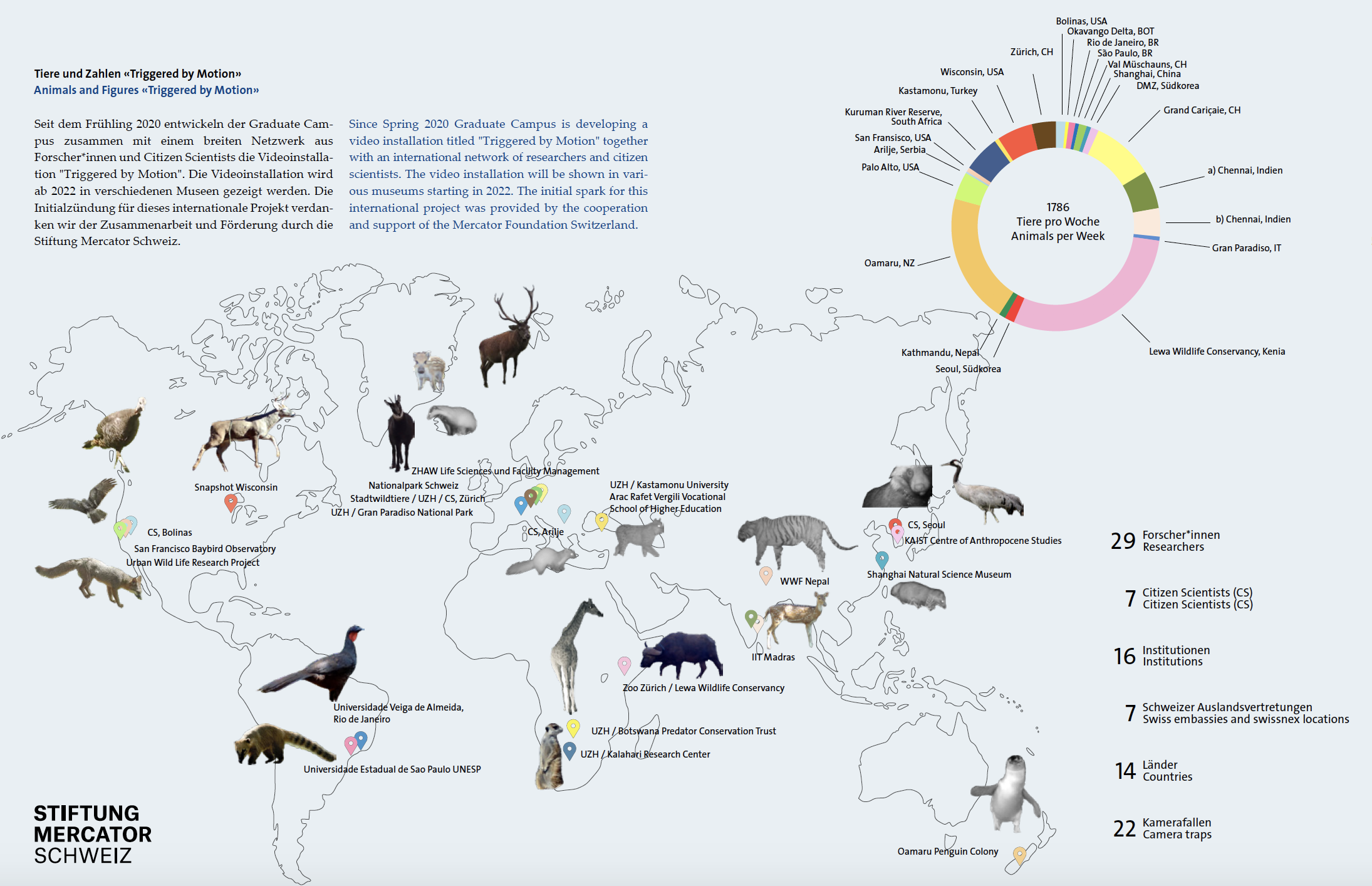Triggered by motion
A Walk-In Wildlife Pavilion
The Graduate Campus developed a video installation titled "Triggered by Motion" together with an international network of researchers and citizen scientists. 20 camera traps in 14 countries were filming the local environment and all the animals that trigger the cameras by their movement. Using this video data, we built a walk-in pavilion where visitors can gain insights into the local biodiversity and immerse themselves in the natural environment of wildlife.
The installation will be shown in various exhibition contexts from 2022 and aims to foster the dialogue between science, art and the interested public. It was first shown in our exhibition "Planet Digital" (11 February 2022 - 6 June 2022), a collaboration between the UZH Graduate Campus and the Museum für Gestaltung Zürich.
Why camera traps?
Camera traps are a relatively simple and non-invasive method for scientists to observe wildlife. At UZH and around the world, researchers use these traps to study biodiversity, animal behaviour or environmental changes - increasingly also in combination with machine learning applications, which are used to process and evaluate the image material. "Triggered by Motion" aims to give an insight into various current research projects and to bring the audience closer to a field of research that, like many others, is undergoing drastic changes due to digitalisation.
